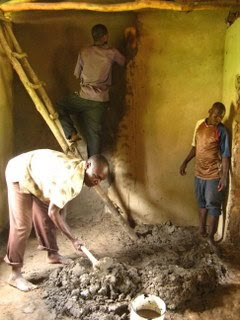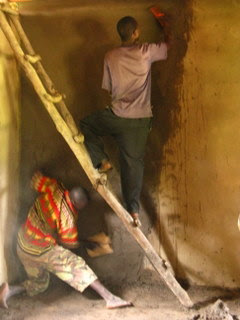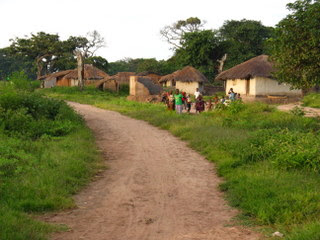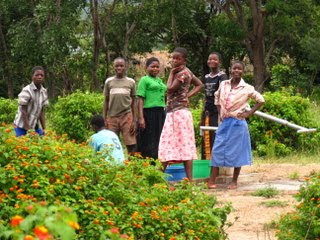Tuesday, January 4, 2011
Friday, April 9, 2010
Resource Center
The Resource Center is nearing completion. This is my biggest project so far. The floor is now finished and we will start using it in about a week. We have over 1,000 hours of labor and about $600 in this project. The purpose of this building is Community development. It will serve as an office and organizing point for the area Community Based Organization and groups under it such as HIV/AIDS support groups, orphan care, food security, bee keeping, poultry raising and other groups the community decides are important. It will be a place for community meetings, trainings, adult education and development planning and will contain a small library of books, information and reference materials. It will be a focus of development for the community by its physical presence and a place for the planning, training and activities needed for development to take place.
I will soon be starting training workshops in tinsmithing, carpentry and tailoring. We still need some money to finish construction as well as tin sheets, planks, cloth, and miscellaneous supplies.
We also need tools like hammers, saws, planes and chisels as well as a treadle sewing machine which costs about $100. Any donations you can make would be greatly appreciated. These donations will provide capital investment for small income generating businesses in the community.
You can easily contribute by selecting the Donate button at the top of the column to the right. It's safe and easy by credit card or from your bank account and the money goes right to me. Thanks.
Today we are plastering the walls.
First dambo sand is dug and hauled in with wheel barrows or buckets. Dambo sand is a sand and clay mix which is found locally. A small amount of cement is added for more strength.
The plaster is put on the wall and smoothed with wooden floats.
Posted by Jim Hemminger at 2:02 AM 0 comments
Lipunga village
This is my village: Lipunga in the Traditional Authority of Mkanda and the District of Mchinji. Here I am with Mr Chitedze in front of his house.
The main road in the center of the village.
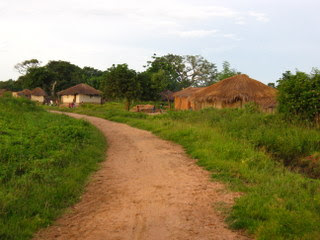
Kids are often playing soccer and other games.
Posted by Jim Hemminger at 1:44 AM 0 comments
New PCV's arrive!
It's been a year since I arrived in Malawi with my group of volunteers and here we are welcoming this year's batch at Lilongwe airport.
There are 3 sectors in Malawi: Environment, Health and Education. Three times a year a group arrives for each sector. Mine is environment.
Posted by Jim Hemminger at 1:21 AM 0 comments
Kids and Games
There are kids everywhere and when they see me they often shout "Bwanji azungu!" which translates to "How are you white man". They are always asking me to take a photo. The boy on the left has a "cataput" or slingshot. Third from left has a "khasu" or hoe on his shoulder - and somebody forgot their pants.

A girl with a hoe. She has been weeding in the fields.


Young people hanging out at the borehole. These are students from the primary school.
Posted by Jim Hemminger at 12:29 AM 0 comments
Thursday, April 8, 2010
Roads and Fields
During the rainy season, which is just ending, the roads get pretty messy and rutted.
Where ever you go there are people walking and riding bikes.
There are some good views along the way.

The kids like to play in the water.

Fields
Tobacco is a big crop in Malawi - the largest source of export income. The plants on the left are tobacco after most of the leaves have been removed. They are harvested from the bottom up as they start to turn yellow and hung in sheds to dry. When dry they are pressed into a bale wrapped in burlap and taken to the auction floor to be sold.



Posted by Jim Hemminger at 11:47 PM 0 comments
Tobacco
These are tobacco plants after most of the leaves have been harvested.
The leaves are tied in small bundles with grass "string" and hung in sheds to dry.
Here is a tobacco drying shed at the back of the field.
Posted by Jim Hemminger at 11:00 AM 0 comments



